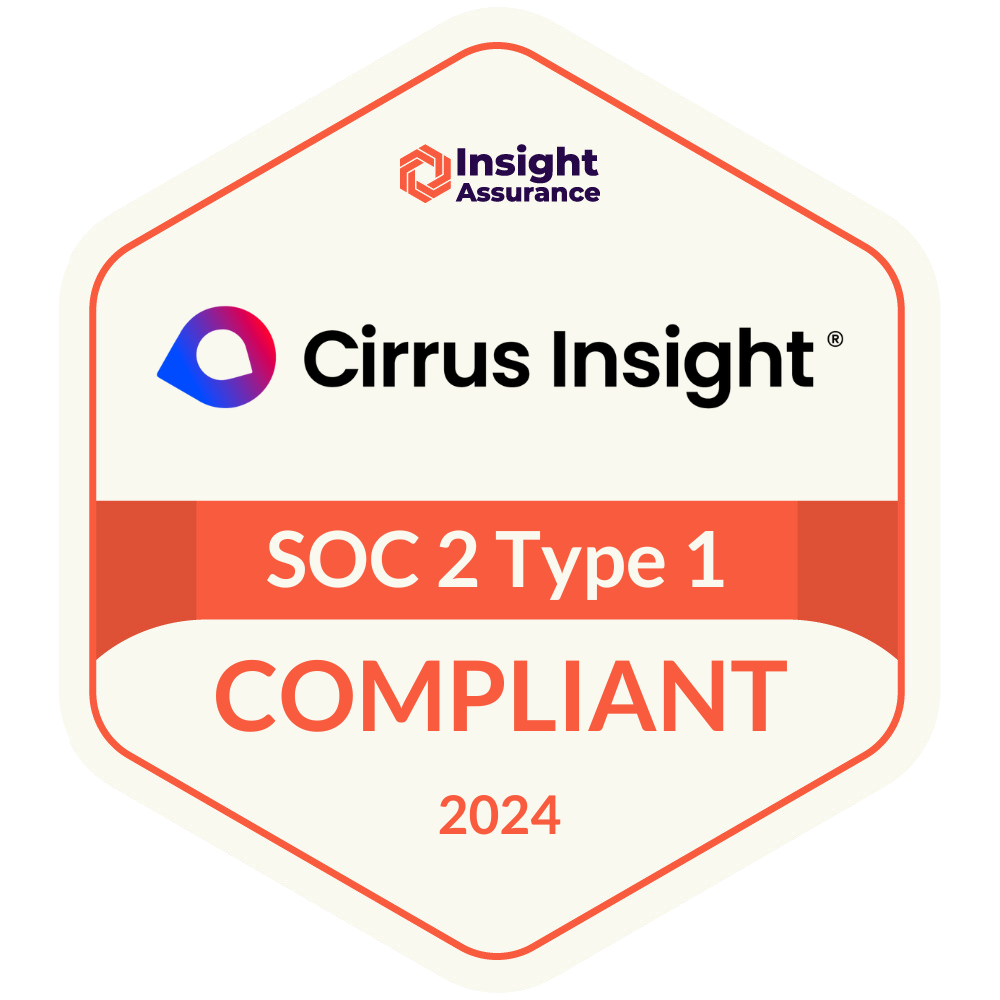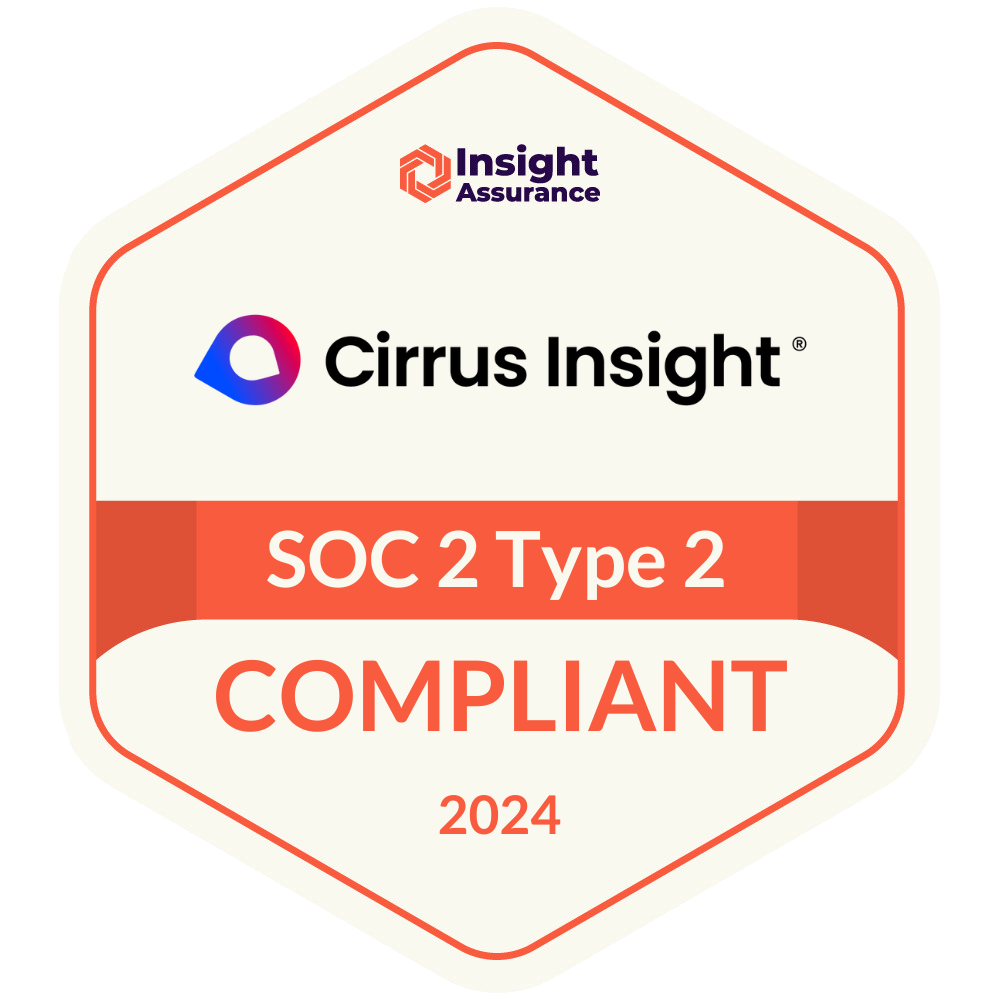- Solutions
-
Products
-
Resources
Sales Automation Tools | Cirrus Insight by Kristi Campbell View all Blog Posts >Get the App, Get the Sidebar, & Get Your Trial Going HereUnleash limitless growth opportunities by partnering with Cirrus Insight.
- Pricing
Salesforce Integration Overview for CRM Admins
Introduction
This document is designed to help Salesforce Administrators understand how Cirrus Insight and Salesforce come together with little to no configuration required on behalf of the System Administrator. Cirrus Insight is designed to emulate your Salesforce configuration whereas user permissions, standard objects, custom objects, record types, page layouts and data validation are represented from within the inbox experience. Cirrus Insight uses a proprietary approach to dynamically generate the user interface for each Salesforce user based on their specific permission sets and page layouts. The goal is to allow a System Administrator to design their CRM data structure in one place without needing to replicate those configurations for Cirrus Insight when integrated with Gmail, Outlook or Office 365.
Approach:
- Centralized configuration. Your design and configuration work should happen in one place (Salesforce)
- Rapid deployment. Without the need for system design and mapping, the Inbox integration can be deployed in minutes instead of days or weeks. If your user base knows how to use Salesforce already, then there is little to no training required to use Cirrus Insight.
- Low maintenance. Your Salesforce configuration and deployment will evolve and change over time – integration with Gmail, Outlook or Office 365 should dynamically refresh and sync with published Salesforce changes instantly.
This article will cover the expected behaviors and examples for CRM admins when evaluating Cirrus Insight for their organization.
Contacts and Leads
Supports Contacts, Leads and Accounts including Person Accounts, Household accounts, or any other Account or Contact Record Type. Does not require contacts, accounts or leads to integrate with Salesforce.
This article presumes a Salesforce customer is using contacts and/or leads. There is a small minority of companies which do not use one or the other, whereas they only interact with custom objects. In this case, Cirrus Insight will allow you to search and interact with those custom objects using the search bar feature.
For the vast majority of Salesforce customers, contacts and/or leads are the primary object for the entire database. When reading or sending an email, Cirrus Insight will query Salesforce to first see if a contact or lead exists within Salesforce simply by performing a lookup for the group of email addresses on the conversation. (do we want to say this is compared to the salesforce contact.email or lead.email field for the sake of clarity?)
Approach:
- If a contact and a lead exists, then Cirrus Insight will select the contact.
- If only a lead exists, then Cirrus Insight will select the lead
- If duplicates exist of either, then Cirrus Insight will indicate the total number of contact and lead records found for that particular email address.
- If the email address cannot be found, then Cirrus Insight will indicate the contact record does not exist at all.
Existing contacts are signified by with a green icon and non-existent contacts are signified with a blue icon.
The Contact exists within Salesforce
- The user is able to click the contact record and interact with any standard or custom object that can be found on either the contact or account page layout. The common interactions for any record on the page are Create, Edit, File Email, Log Call, Add Task, Add Event or View in Salesforce.
- If permissions allow, the user is able to edit the contact and account record
A Lead exists within Salesforce
- The user, if they have permissions, is able to edit the lead or interact with the lead record. The common interactions for any record on the page are Create, Edit, File Email, Log Call, Add Task, Add Event or View in Salesforce.
- The user is able to convert the lead to a contact
The Contact does not exist in Salesforce
- The user is able to either create a contact or lead in Salesforce
- If leads are disabled in Salesforce only “New Contact” will be an option
- If the user is not able to create contacts in Salesforce, the “New Contact” option will not display
- When creating a contact, Cirrus Insight will automatically try to match the contact with an existing account if…
- A contact with the same email domain extension exists
- An account has the same website as the contacts email domain
- Cirrus Insight will not choose an account it finds multiple possible accounts the contact could likely be associated with
- If the Account is automatically matched, the user still has the option to search and change the Account before saving the record.
- When creating a contact, the user can perform a Salesforce search on Accounts to select an existing account to relate the contact.
- If the proper Account does not exist, then the user can create an account
- The user can create the contact and can also elect to create and sync the contact with their address book at the same time they create the contact in Salesforce.
Contact page layouts, record types, permissions and data validation are covered in other areas of this article.
Knowledgebase articles can be found that illustrate the implementation of account and contact features at /knowledgebase/create-a-salesforce-contact-and-account/
The user experience for creating new contacts and leads is described here /knowledgebase/create-a-salesforce-contact-and-account/
Profiles, Page Layouts & Record Types
One of the key components to the Cirrus Insight integration with Salesforce is the ability to recognize multiple page layouts and their associated record types based on the users profile.
In the Cirrus Insight side panel, each user will see any related list object that appears on either the Account or Contact page layout. If a user profile has access to multiple page layouts, then they will be able to view and create for any object which is in the related list from any of those page layouts.
If the Profile page layout has multiple record types, the user will be able to pick between those record types when creating or editing a record.
The record type will control the field validation requirements.
Object Access, Field Level Security and Data Validation
As discussed in the previous section, object access will be driven based on the user’s profile and page layout for read, create, edit or modify rights. Field level security is also recognized from the user’s profile.
Data validation is driven from the record type. The following data validation functions are supported with Cirrus Insight.
- All Field Types and Formats – E.g., lookups, search, dropdown, text, etc
- Required Fields
- Controlling Fields
- Dependent picklists
Cirrus Insight will display any Salesforce error message assigned to the page layout when further validation is required to create or edit a record.
Illustrations of some aspects of editing Salesforce records are available here:
/knowledgebase/edit-a-salesforce-record-from-within-email/
Filing email & Attachments
Cirrus Insight has several ways in which you can file email and attachments.
Email Filing Methods:
- Quickfile – File the email with one click directly to the contact record
- File Anywhere – This will allow the user to file the email and relate it to 2 objects
- Any contact or lead they can access
- Any Standard or Custom Object, with a direct relationship to the contact, like opportunity, case, etc
- Attachments can also be filed from this menu
- Actions Menu – Allows the user to file the email to the contact/lead. The related object will be selected automatically based on which action menu is selected and can be edited.
- Search – The user can search any object in Salesforce and then relate the email to any object returned in the search results using the actions menu.
Automatic Email Filing:
Additionally, you can click the File Anywhere email icon in the Top Nav to see where/how the email was related to Salesforce records.
Multi-File:
The user can highlight multiple email messages and file them all at once. This option will allow the user to select which attachments should be filed or ignored as well.
User documentation for email filing is located at the following URL in the Zynbit knoweldgebase. /knowledgebase/file-an-email-and-attachments-to-salesforce/
List Display, Sorting and Search
When viewing a contact with the Cirrus Insight task pane, related records will display vertically beneath the contact card. Opportunities, cases and open activities will be displayed at the top with other standard and custom objects. The order of objects can not be changed, but it is possible to suppress objects which are not desired in Cirrus Insight. Contact related objects will display above account related objects.
Within the object view, there will be related record lists for each related record. For example, you may see 6 opportunities that are related to the contact or account. Cirrus Insight will show the first 2 records and if there are more than 2 records, then there will be an option to “show more”.
*Note: Contact Role Opportunities are supported with Cirrus Insight. When interacting with a contact who is associated with Contact Role Opportunities, then the Contact Role Opportunities will display in the Opportunity list as well.
Related Record Lists will be sorted in the following ways by default.
- Opportunities, Cases and Custom Objects: Sorted by last modified date
- Open Activities (Tasks, Calls, Meetings and Email) – Sorted by activity date, then created date
Lookup Field Results – sorted by last viewed date, then by last modified date
Search Results (All Objects) – sorted by last modified date
/knowledgebase/search-salesforce-using-zynbit/
Closing
The Cirrus Insight integration to Salesforce is designed to be an intelligent integration which understands the underlying architecture of your Salesforce database. If you want to control or change the Cirrus Insight User Interface as a Salesforce admin, you can do so from within your Salesforce Admin and Setup options by managing user profiles, page layouts, record types and field validation. The product is driven by 1000’s of Salesforce admins like you and we seek to be very collaborative in our development and roadmap. If there is something we have missed or you believe we can make it better, we want to know it! Please visit, /knowledgebase/ or email us at help@zynbit.com.





